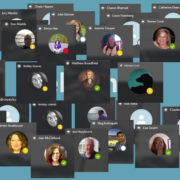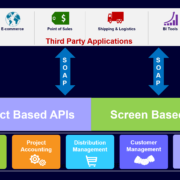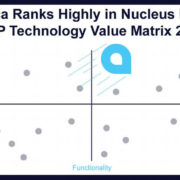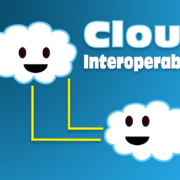We are moving to a MultiCloud World
In recent years, cloud-based software has become increasingly popular with software providers and consumers alike. Of course, it wasn’t always that way. I still remember when Adobe announced that they would only be producing a cloud-based software and their biggest market segments were in uproar. A similar reaction occurred when Microsoft moved their Office Suites to the cloud, creating Microsoft Office 365. More recently, we were in for an even greater surprise when they released Dynamics 365. Now, moving to the cloud (or a SaaS version) has become a normal option. What does that mean for consumers? This means the tasks you can do for your business while on the go are becoming limitless.
The days of being impressed by being able to send an email from your phone have long gone. With the technology of today, many jobs can be done completely from home or even in a coffee shop if it has good Wi-Fi. So, now that some of us have been liberated from the office, what’s next for cloud computing? According to Acumatica, “a MultiCloud world”. Now that so many services are available on cloud platforms it gives new options for users to integrate their various cloud services, making them accessible together for the users regardless of their location.
How the Cloud Works to Communicate
The first thing you need to know for this to make sense is that the term “The Cloud” is a bit misleading. When people say “the cloud” it’s just a title. The reality is that the cloud isn’t one big room with Adobe Creative Cloud in one section and Microsoft Office 365 in another, they are actually on separate clouds. Think of these clouds as individual houses in a world referred to as The Cloud rather than the concept of a big cloud that houses minor cloud in suites.
How they work is that those individual clouds communicate with a browser to share data, but they can’t communicate with other clouds because they are in separate environments. Because of this, manually integrating different clouds is no easy task namely because many clouds are built with different infrastructures.
How Do Clouds Work Together?
One might think that since the cloud communicates with the browser and the browser can communicate with other clouds it would be fairly easy to get the two clouds to communicate with one another. But integrating separate clouds is more complex than that, this is because:
- A browser does not have access to data across clouds.
- You can use mobile apps, but the user experience is limited due to screen real-estate restrictions.
- Using mobile applications as a substitute also means you need to download and maintain every single one of them. In addition, they are designed to provide limited customization capabilities.
The simplest way for separate clouds to communicate with one another is for their creators to work together to build a bridge between the two software, thus integrating them. In other words, it is ideal to adopt a business solution that already has integration capabilities within the software. Companies like Acumatica have been very proactive about making these kinds of connections, they were even the first ERP to integrate with Power BI and introduced their software’s integration with Outlook when they released Acumatica 6. They have also integrated with other business solutions like Salesforce, Hubspot and Microsoft Office 365.
Clients First is an expert at implementing Acumatica, Dynamics AX and Dynamics 365 (which also made it into the leader quadrant). Contact our sales team today by calling 800.331.8382 or emailing info@www.cfbs-us.com. Clients First implements and supports clients across the U.S.A. and in 11 countries. Our team of professionals are ready to help implement the best finance and operations solutions for manufacturers, distributors, project-based manufacturers, MRO (maintenance, repair and overhaul), and professional services.

Source: Acumatica






